Regular readers will know that I love Talisker. It’s certainly one of my three favorite distilleries. In 2013, around the beginning of the NAS craze, Diageo released Talisker Storm to much marketing fanfare and an initial retail price of around $70 – $80. The only difference between it and the flagship Talisker 10, a perennial favorite, was the lack of an age statement and the use of (some) re-charred ex-bourbon casks. Why the premium over the 10 year, which was around $50 at the time? Purportedly, the selection of both younger (3 year) and older (25 year) casks brought more smoke and a better balance of sweetness to Talisker.
Talisker Storm met with a flurry of mixed reviews. (See what I did there? I slay me!) Some reviewers appreciated the different perspective on classic Talisker without going too far outside the box. Others decried the higher price and lack of age statement. Reviews also seemed confused on whether Storm was actually more or less smoky than the 10-year, and whether it was actually sweeter or not. Fast-forward 6 years and, tellingly, the price of Talisker Storm has slipped significantly below its stalwart age-stated sibling, now retailing around $40 and in some markets as low as $33! It’s hard to say whether this is due to its relative lack of quality, or if those negative reviews were a self-fulfilling prophecy. It’s also impossible to know if the blend of casks has changed along with the price. Is there still 25 year-old whisky in Storm? If so, it might be measured by the teaspoon…
I somehow managed to entirely sidestep the whole fiasco. This happened for two reasons. First, my local tasting group back in 2013 roundly panned the whisky when I asked if they’d all tried it. Second, I tried Storm while entirely sloshed at a whisky show, and my voice notes once transcribed read something like “urrrshhhhsh maybbeeeshh goood. I’unno.” Let’s see if I can improve on that slightly:
Nose: Definitely Talisker DNA: savory smoke, brine, and black pepper. The smoke is oddly more evident away from the glass – inside the glass the smoke becomes delicate and is overshadowed by unusually sweet malt. This results in the strange sensation of appreciating the aroma more above the glass than in it. The un-Talisker sweetness in question is a combination of shortbread cookies, honey, apple juice, and pancake syrup (not maple).
Palate: Medium bodied, not quite syrupy. Mild tongue burn. I’m used to being punched in the face, metaphorically speaking, by Talisker distillate. This feels more like a delicate caress. The brine is there, as is the black pepper, and the peat evolves properly across the tongue, starting smoky and ending earthy. Still, the usual Talisker-ness is missing, replaced by a parody. A sweet one.
Finish: Medium-Long, but doesn’t linger quite like the 10 year. Again, there is an odd candy-like sweetness that accompanies the briny smoke, turning what should be an experience of seaspray on an unforgiving rocky coastline into… a sputtering candy-scented gift candle. Fades with more of the same.
With Water: A few drops of water tame the sweetness on the aroma and bring out some lemon peel. The palate is brighter and has more tart high notes, which makes it less cloying. I highly recommend a little water with this.
Overall: I see what the detractors are saying. This is Talisker, but it feels like Talisker invaded by a troupe of Care Bears, which have turned the crusty old seafarer into a dancing cartoon version of itself. I find this to be sweeter and less smoky than Talisker 10, although other reviewers have found the opposite.
To be fair, the only reason I don’t like it is because of my own expectations of what Talisker is. Taken in isolation, objectively, this is tasty, well-crafted malt with a nice balance of sweetness and smoke. If you don’t go into it with the “This is Talisker” mentality, you’ll probably enjoy it. Especially at the marked-down price, which is squarely where this belongs. I would expect to pay about 20% less than Talisker 10 year. If you can find it for under $40, snap it up.


About The Distillery
Talisker is located on the lonely Isle of Skye, off the western coast of the Scottish Highlands (included in the “Island” region by owner Diageo). The population there still speaks Scots Gaelic, and Talisker was the only whisky distillery on the island until Torabhaig was built in 2017. But oh, what whisky. Poet Robert Louis Stevenson identified this distillery’s product as a category of its own, and once referred to it as “the king of drinks.” He wasn’t alone. In the James Bond movies, 007 and M can be seen drinking Talisker. Like Bond, Talisker is rough by nature – rocky and influenced by the sea by which it is made. The spring water flows over peat and has a very high mineral content.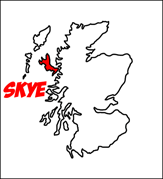


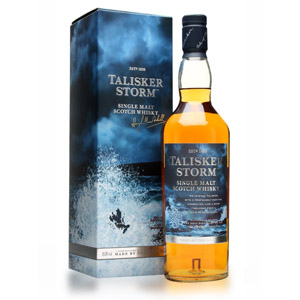

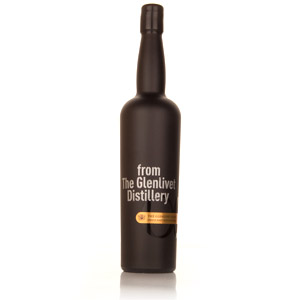
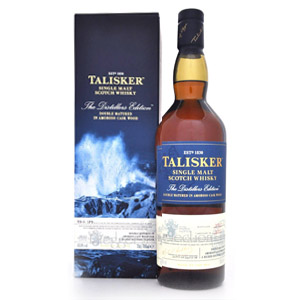
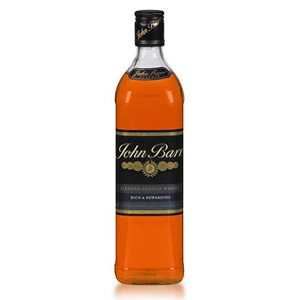

I haven’t tried this one, but a friend gave me a sample of the Talisker DARK Storm. I couldn’t tell you the difference between Storm and Dark Storm, but DS was pretty good. I still prefer the 57 North and the 10, personally.
We have it around here for $25 to $30 … at that price point, would you say it’s a must try?
If you like peat, then absolutely.
I think that Storm has more smoke but less brine than Talisker 10. As far as sweetness goes, there is an underlying layer but, to my palate not as pronounced as what you’ve detected. Then again, my palate is probably not as refined. I definitely agree with the price point. I can get it for $32 at my local Total Wine and Beverages store and will continue to buy it.
I’m one of those people who got burned paying $90 for this back when it first came out (and that’s why I hounded the Noob for years until he finally reviewed it). But now that the price has come down I need to give it another go.
“The only difference between it and the flagship Talisker 10, a perennial favorite, was the lack of an age statement and the use of (some) re-charred ex-bourbon casks.”
If that’s the only difference, how did this turn “the crusty old seafarer into a dancing cartoon version of itself”? You’re close to the answer when you say the much-talked-about 25-year content is probably added with a teaspoon. Sure, make it cheap enough and anyone can argue it’s a decent value, but changes on labels (particularly omissions of minimum age) usually reflect differences in content and a desire to change content – which is usually exactly the reason minimum age was omitted in the first place. The idea that NAS is some magical means to give customers a lot of older whisky at sub-market prices isn’t really anything that withstands a lot of rational reflection, but it is something to tell oneself to be convinced you weren’t fleeced – people do this with Blue Label all the time. This stuff wouldn’t be better with an age statement, but it might give more clues as to why it is what it is.
The answer to your question is that “the only difference” is quite a big difference, although you conveniently cropped the quote to exclude it. The use of barrels aged between 3 and 25 in a vatting is guaranteed to produce a different-tasting whisky than one comprised of casks all aged 10 years and a day. This isn’t news to anyone. If the bottle had an age statement, it would say “3”, which does not tell you whether the bottle is all three years of age, or 10% 3 years of age and the rest 25 (it’s not, but the point stands). In a case like this, the age statement is not any more or less helpful than the lack of one. Except, I suppose, for those consumers who don’t know that 3 years is the minimum legal age for scotch whisky. The cogent detail here is that when producers leave out an age statement, they are asking you to trust them that their magical blending skills have produced a better concoction than the simple passage of time could have. In some (most?) cases, like the above, this simply isn’t true, and the price has degraded to reflect that. Market forces at work, yay! In some cases, like it or not, it is true (Aberlour abunadh and Ardbeg Corryvreckan are the easy examples, but there are others). Only by tasting can you determine which is which, a burden on the consumer to be sure.
I’m not sure what “part of the quote” I “cropped” but, then again, I’m not sure who assumed Storm was really just the 10 with no age statement and the use of (some) re-charred ex-bourbon casks anyway.
Following that line, you give some speculation as to the reason for the price premium but what was in the bottle, much less at different points in this expression’s history, was really anyone’s guess – and, evidently, didn’t justify the premium to many.The 25 content was as much hearsay as the 3.
The idea that either Aberlour abunadh or Ardbeg Corryvreckan are somehow better whiskies than the simple passage of time (alone) could otherwise make them is interesting, and no doubt supported by Aberlour and Ardbeg, but very difficult to substantiate. To what Aberlour and Ardbeg products, and at what ages, would one compare them to make the case? Without composition information on the NAS products, where would you start? That omitting an age statement is a some sure sign that an NAS even IS a multivintaged or blended concoction is a misplaced leap of faith in itself (there is no such direct association; simply omitting age isn’t the same as multivintaging a product), but it certainly helps sell the idea that you can’t have whisky alchemy and whisky information at the same time.
I purchased a bottle from the liquor store that was advertised at 80 but sold for 29.99. Sounded like a great price! But was quickly disappointed. It’s no Laphroaig.
To me, this is Talisker Light. Which was not OK at its original premium price point, but is OK for a $30 or $35 malt. I did pick up two bottles at that price a few years ago, but I seldom find myself reaching for the Storm.
I started following your blog when I came across your statement, “Talisker Storm met with a flurry of mixed reviews. (See what I did there? I slay me!).
Classic!